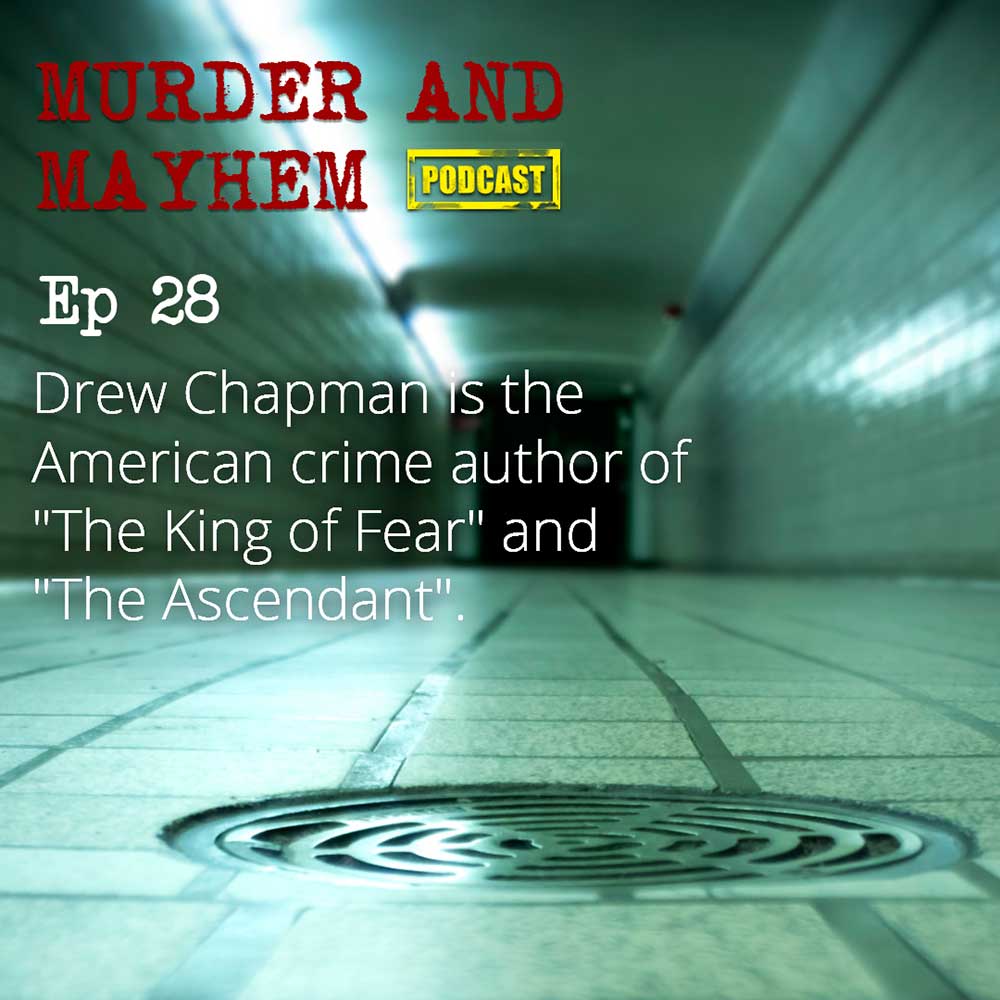
 Drew Chapman is the American crime author of The King of Fear and The Ascendant. He has also been a screenwriter for Disney, Fox, Universal, Warner Brothers and Sony and has co-executive produced the second season of the spy show Legends.
Drew Chapman is the American crime author of The King of Fear and The Ascendant. He has also been a screenwriter for Disney, Fox, Universal, Warner Brothers and Sony and has co-executive produced the second season of the spy show Legends.
Drew Chapman says you need to create a hero that people can relate to. “I want to see a hero who’s sort of like me, who is just an everyday guy who might have a particular specialty in life who applies that specialty to the world.”
He believes that a strong story always centres on a character. “All of my books, all my television writing, whatever I do, it’s always about a character, it’s always about a person. I always shape the story around that one person.”
GETTING TO KNOW YOUR HERO
Drew’s books centre around a main character named Garrett Riley, a young bond trader in New York City. “It takes me weeks, sometimes years, while I’m working on other things to think of that character that I want to write. Like, in this case Garrett Riley. So, I have this guy and I’m like, ‘Oh, I want to write about him.’
“Then I think about who he is, and I sit down at my computer and this I guess is my Isabel Allende moment, right? I sit down and free associate about him and what his problem is and who he is and what his situation is – his parents and his past and his issues and his flaws and who he loves.
 “And I just write that for as long as it takes. Sometimes it’s, like, an afternoon. Sometimes it’s, like, weeks. I just sit and I keep writing and the document can be 50 pages long, and it’s all just nonsense, but it gets it onto the page for me and I refine and I get closer and closer.”
“And I just write that for as long as it takes. Sometimes it’s, like, an afternoon. Sometimes it’s, like, weeks. I just sit and I keep writing and the document can be 50 pages long, and it’s all just nonsense, but it gets it onto the page for me and I refine and I get closer and closer.”
THINKING IN THIRDS
“Once I’ve finished that up, I start laying out the story. And I work in big chunks. Because I’m trained as a screenwriter, I think in thirds,
I think in first act, second act, third act. So I think, ‘OK, in this first act this is what’s going to happen at the end of the first act. This is that big change, this is the big sort of reversal. Here’s my middle, and that’s going to be the middle of the book. Then at the end of that here’s my next big switch-a-roo. And then this is the goal I’m writing towards, here’s my finale. And here’s how it’s going to end. And even before I’ve figured out any of those in between stages, I need to know what the final scene is.
“I always say that this is not Tolstoy, this is a book you pick up at the airport in Los Angeles and you read as you’re flying to New York.
I love those books. I think those books are great and fun, but these always have these protagonist who are so macho and male, and like they could kill you with their little pinky, I just I don’t know that person. I’ve never met that person.”
DREW’S TIP: IN THE MIDST OF THE ACTION, IT’S ABOUT REVEALING YOUR MAIN CHARACTER
“I like to think that even though I write stuff that has a lot of sort of action and thriller-y, mystery stuff in it, it’s just a character study. It’s just about people. And, so what are the scenes that are interesting and fun that really reveal who this guy is and all of the people around him?”
Listen to the Australian Writers’ Centre’s spine-tingling Murder and Mayhem podcast here.
About us
Contact us